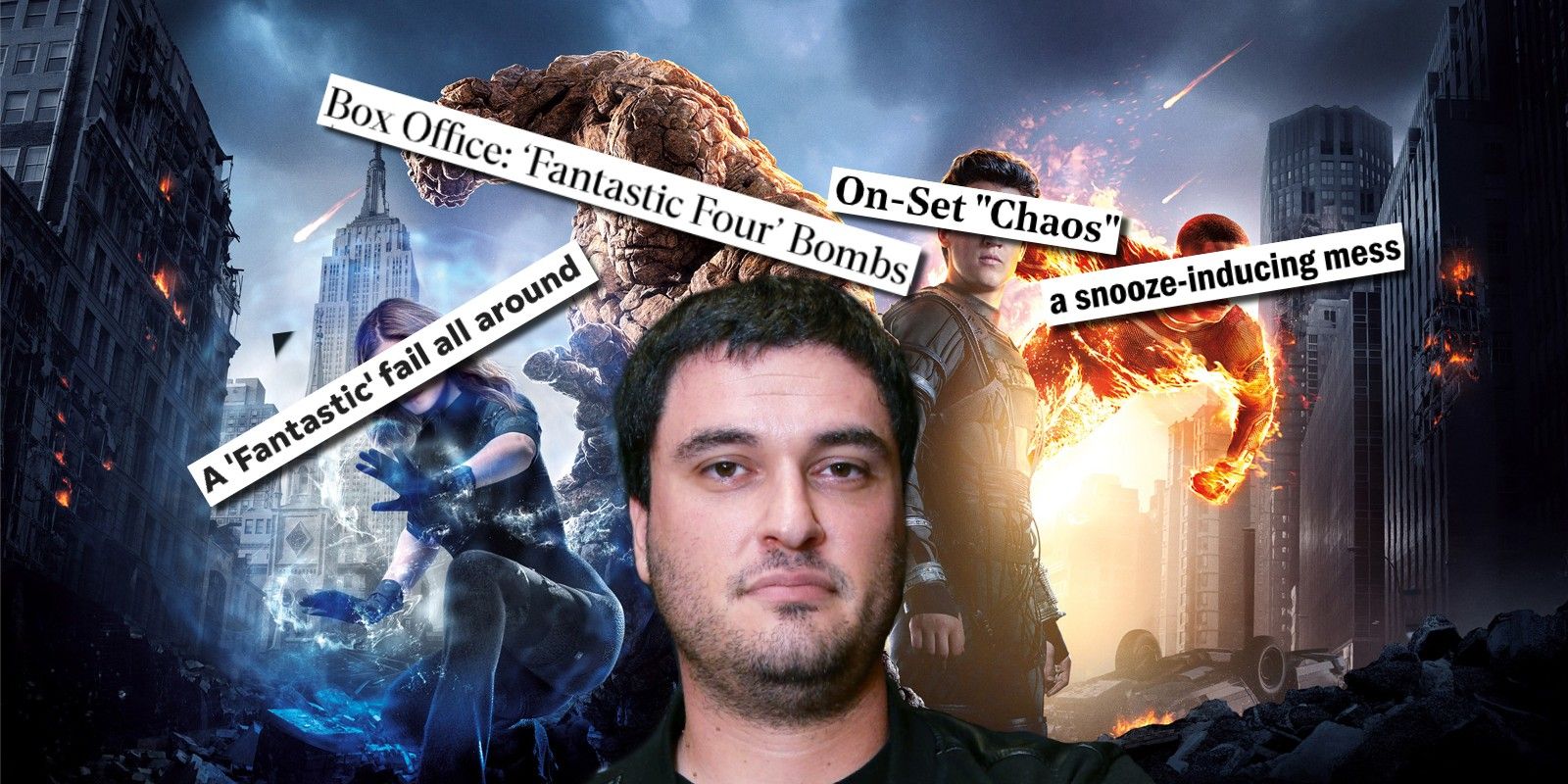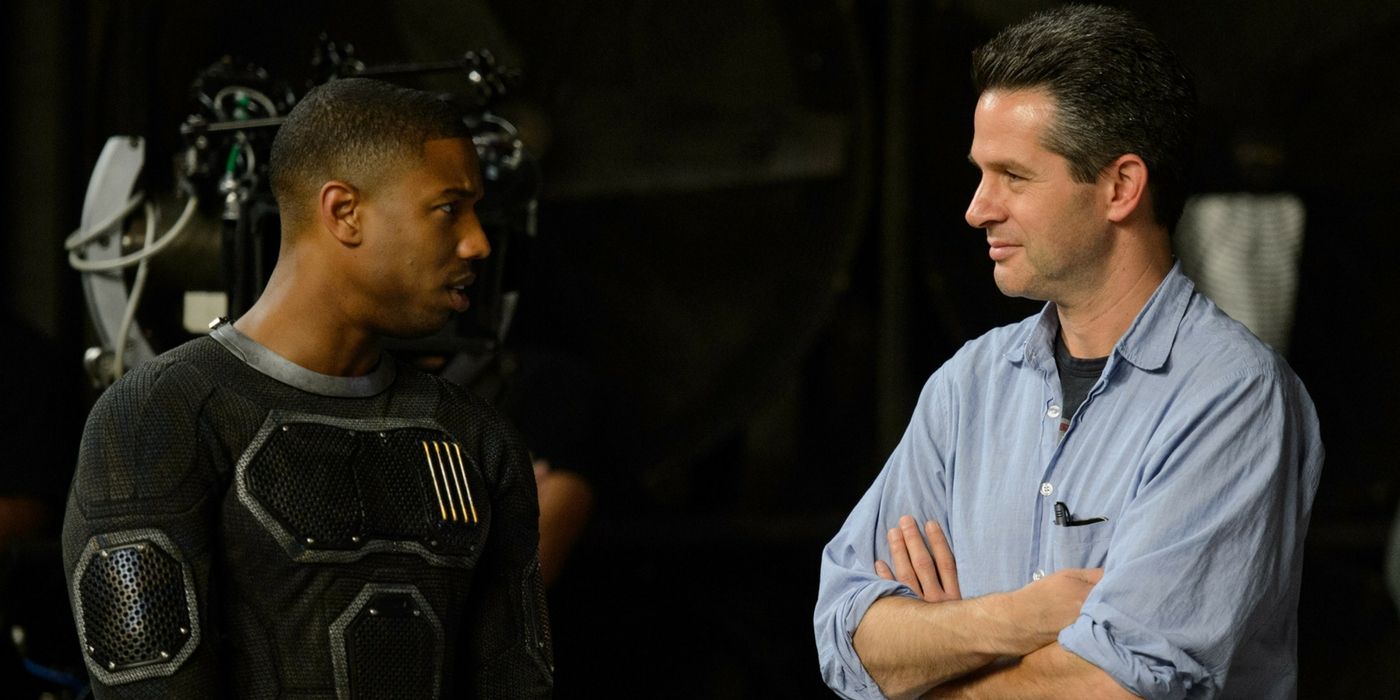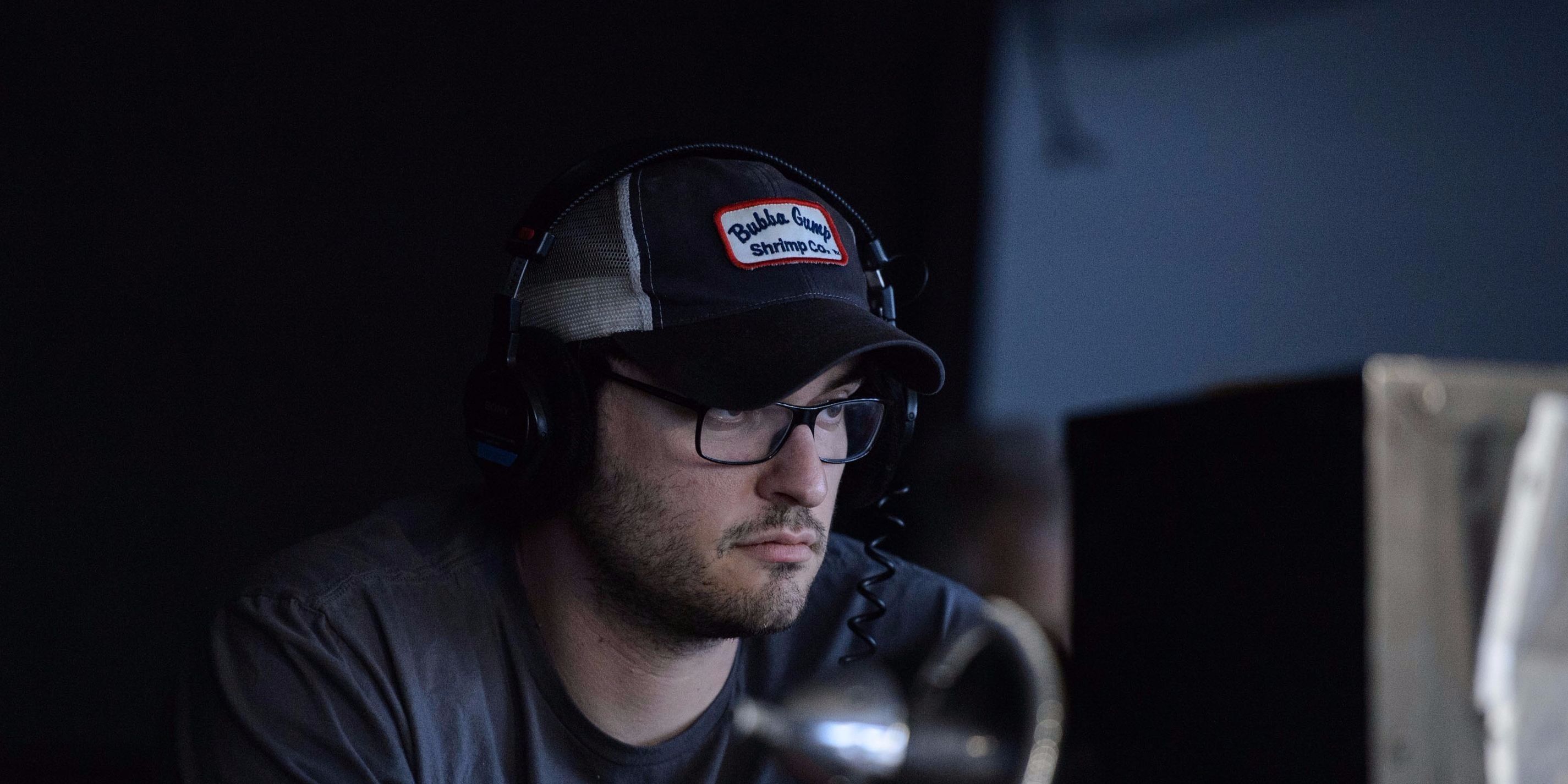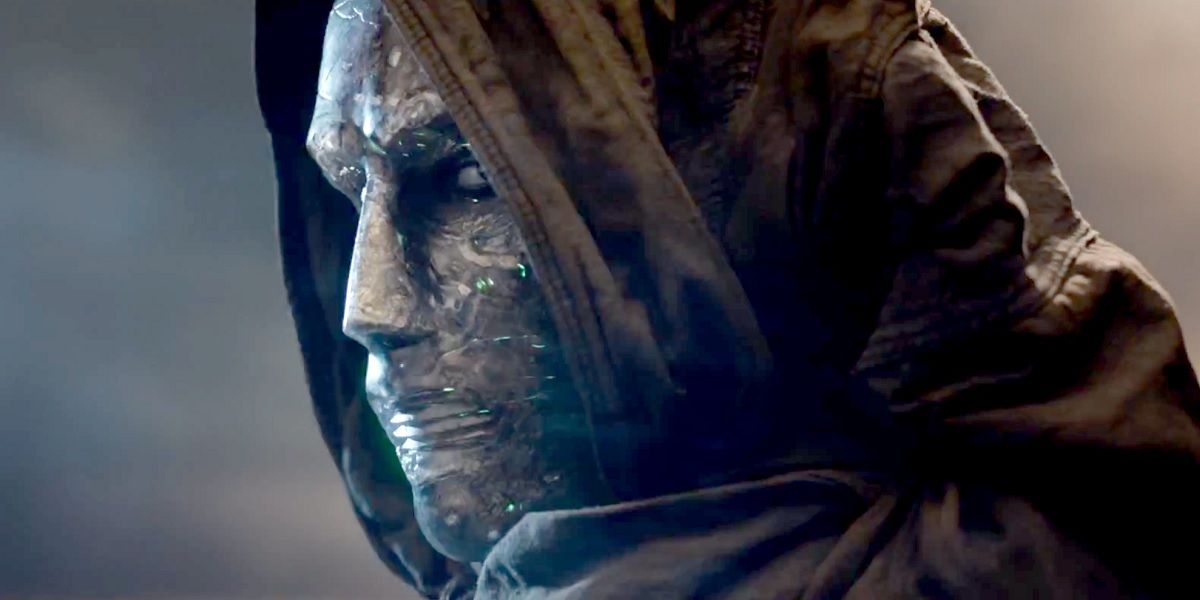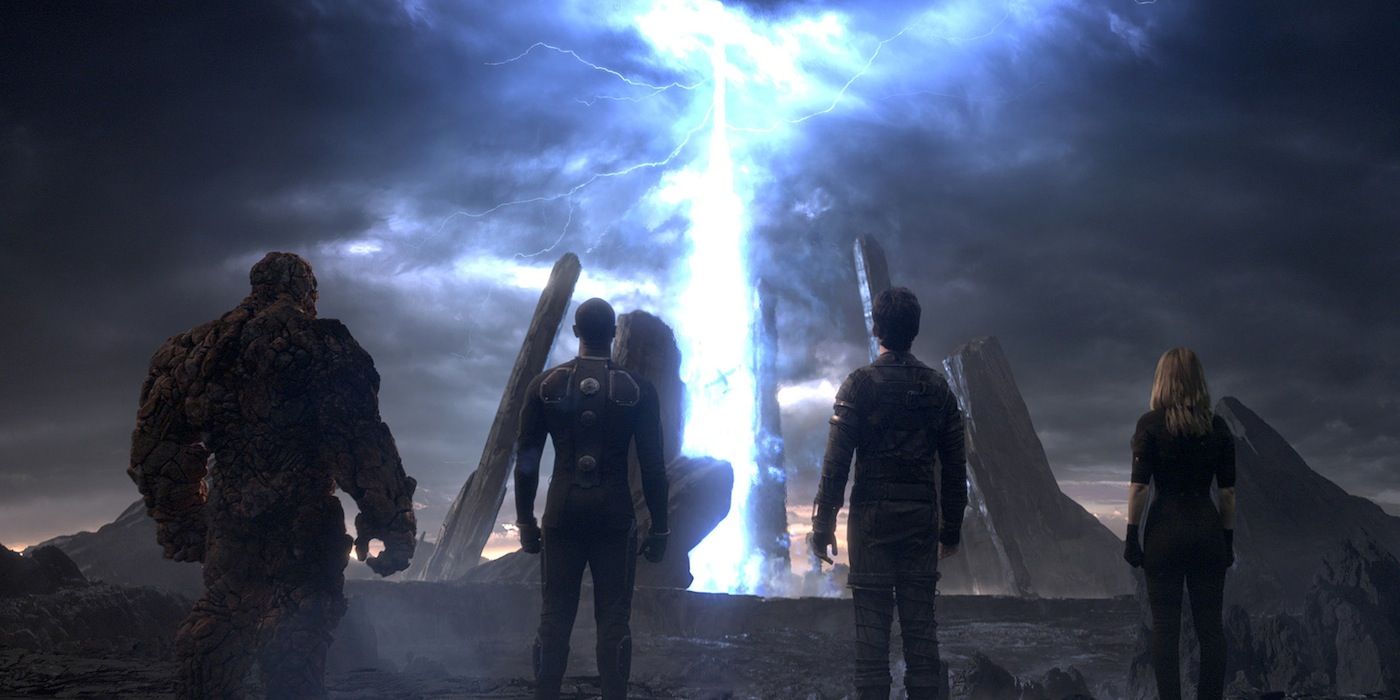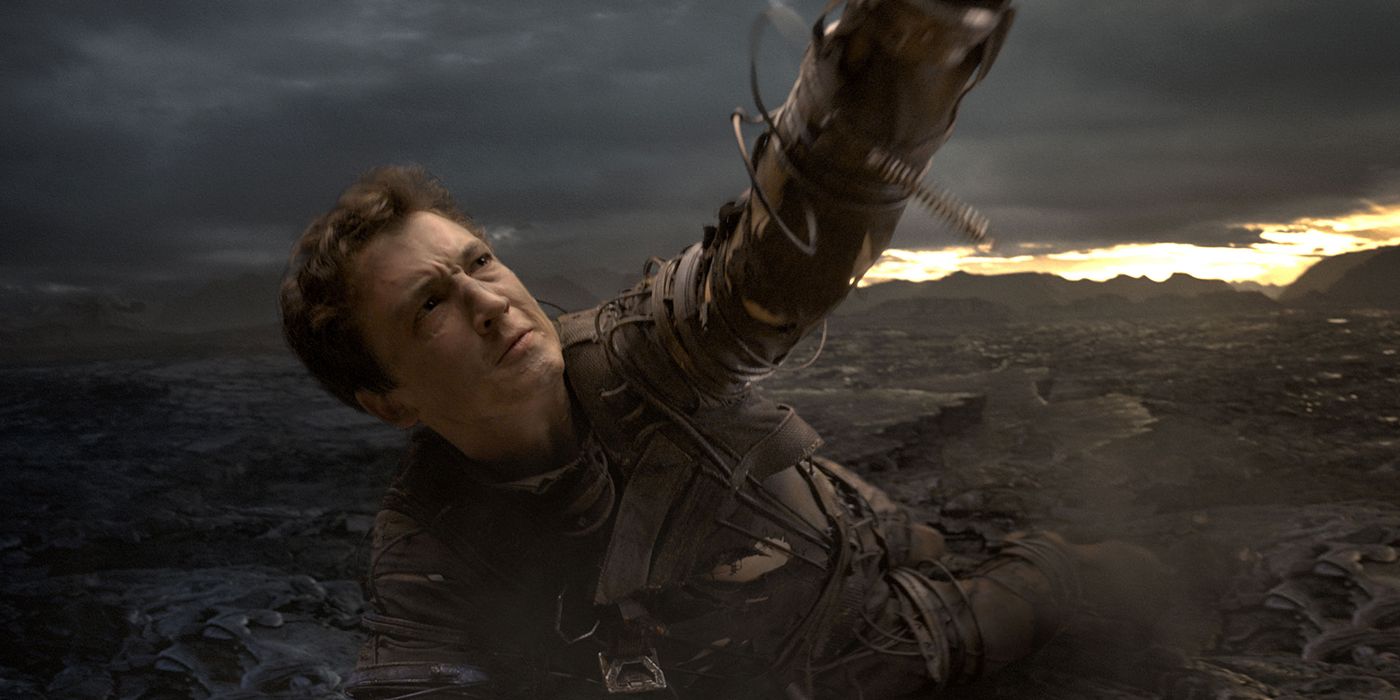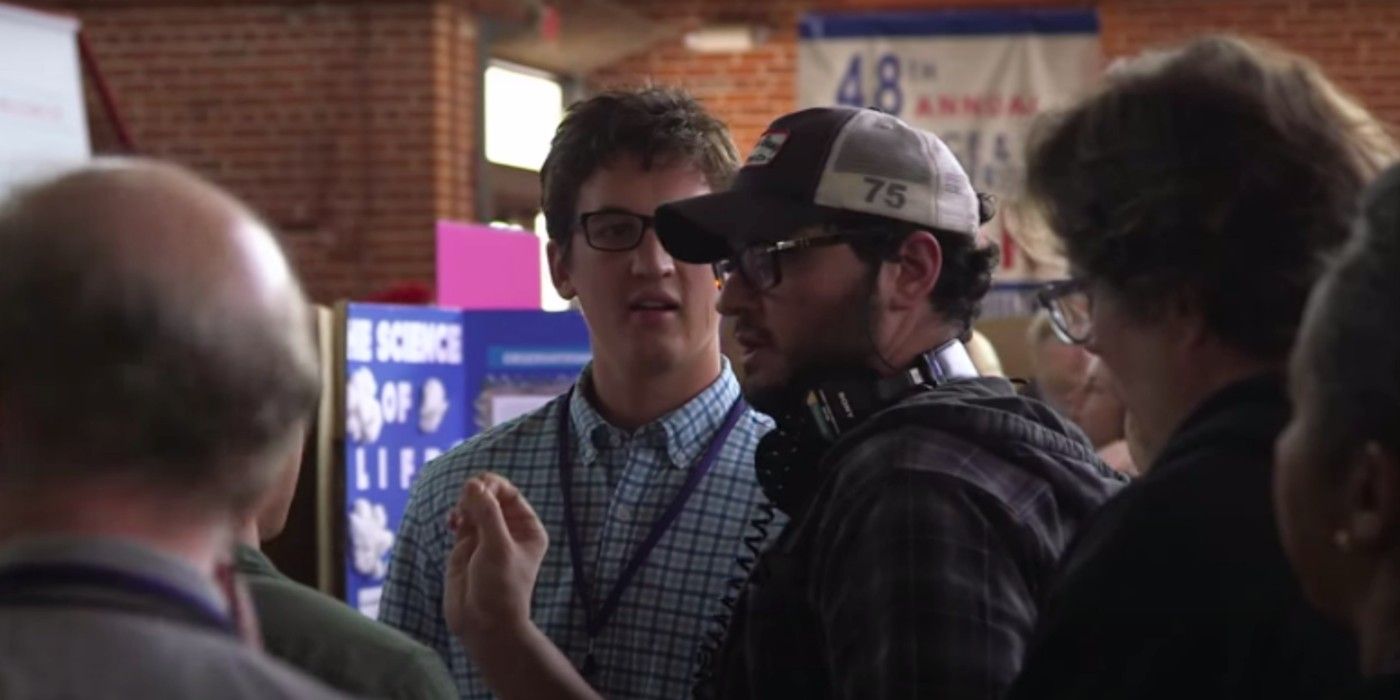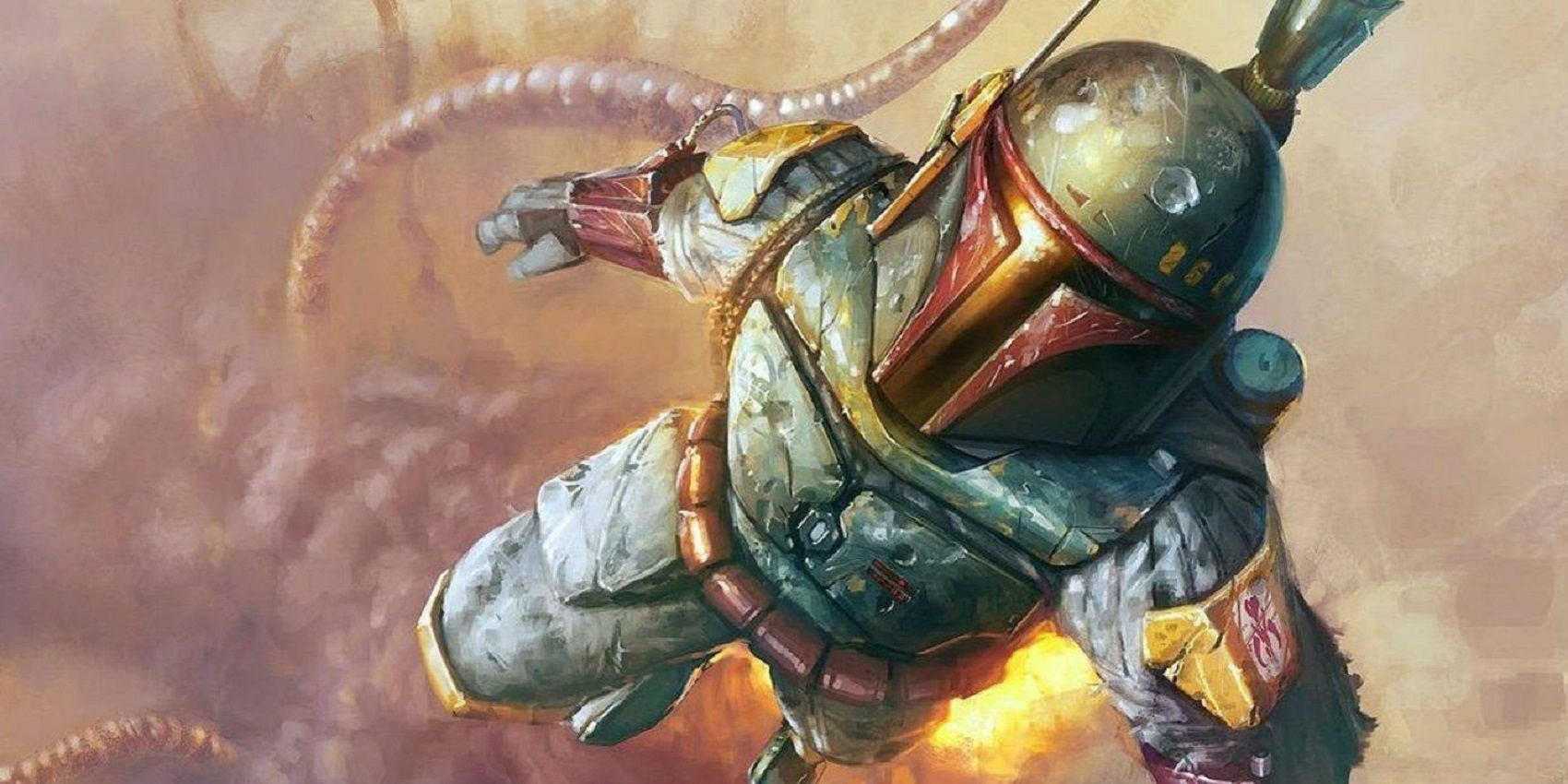2015 Fantastic Four's reboot is notorious for being one of worst big-budget superhero movies of all time, and in a newly-released interview director Josh Trank has offered some big reveals about exactly what went wrong with the project.
After Fantastic Four: Rise of the Silver Surfer failed to live up to the success of 2005's Fantastic Four, 20th Century Fox left the franchise to lie dormant for several years before hiring Trank to direct a reboot. Hot off the success of his lo-fi superhero movie Chronicle, a found footage take on what might happen if a group of teenage boys got superpowers, Trank seemed like an exciting choice to take on a new origin story for Marvel's first family.
Three years later, Fantastic Four arrived in theaters under a toxic cloud of bad reviews and rumors of a hellish production. It holds a score of just 9% on Rotten Tomatoes, with critics generally agreeing that the finished product was a drab mess. How did such a promising project go so wrong? Here are the biggest reveals from Trank in Polygon's deep-dive on the director's career before, during, and after Fantastic Four.
Fox Always Planned To Film The Ending In Reshoots
One of the reasons that Fantastic Four's final cut feels so cobbled together (which also happens to be the explanation for Kate Mara's terrible blonde wig in certain scenes) is that by the time principal photography was finished, the movie's ending still hadn't been shot at all. At the time it was reported that Fox had slashed Fantastic Four's budget by tens of millions before filming began. Trank revealed that the majority of the "spectacle-filled finale" had been cut, with plans to film the ending during reshoots instead. This meant that Trank went into production knowing that he wasn't going to be shooting a complete film, which only added to the stress. When the reshoots came they suffered from scheduling issues that meant bringing the four lead actors in on weekends in an effort to cobble together a finale for the movie.
New Writers Were Hired For Fantastic Four Reshoots (& Trank Was Ignored)
Fantastic Four had a revolving door of writers, and the studio continued adding new names even after filming had begun. Jeremy Slater (Death Note) initially worked with Trank on a script, but Trank insisted on acting as a buffer between Slater and the studio. Slater said that he was not allowed to speak with Fox unless Trank was present, and he never got about 95% of the studio's script notes. Slater left the project after six months, at which point the studio brought in several other writers, including Seth Grahame-Smith and Simon Kinberg, to try and get the script ready for filming. During reshoots the studio brought in even more writers to produce script pages. Trank wrote his own pages, but they were ignored. He compares the experiencing of filming the reshoots to being castrated:
"You’re standing there, and you’re basically watching producers blocking out scenes, five minutes ahead of when you get there, having [editors hired] by the studio deciding the sequence of shots that are going to construct whatever is going on, and what it is that they need. And then, because they know you’re being nice, they’ll sort of be nice to you by saying, ‘Well, does that sound good?’"
Trank's Fantastic Four Director's Cut Doesn't Fully Exist
Though Trank managed to grit his teeth and play nice throughout the press tour for Fantastic Four, the first reviews of the movie broke him. Just before the movie opened wide in theaters he tweeted, "A year ago I had a fantastic version of this. And it would’ve recieved [sic] great reviews. You’ll probably never see it. That’s reality though." While this incendiary statement created the impression that a "Trank cut" of Fantastic Four exists out there somewhere, that's not exactly the case.
According to Polygon, Trank did in fact strike a deal with Fox that would allow him to edit his own version of the movie, while veteran editor Steven Rivkin (Avatar) worked on the studio's version. Trank soon realized that Fox had absolutely no intention of using his cut, but continued to edit it in the hopes that a few select scenes might be included in Rivkin's version. Ultimately, however, many of the scenes that Trank wanted to include in his Fantastic Four movie were never even filmed, and the "Trank cut" of the movie doesn't exist in any complete form.
Jeremy Slater Wrote 18 Drafts of Fantastic Four's Screenplay
Screenplays often go through many different drafts before the shooting script is ready (and often there are a few more redrafts after that). Due to Trank acting as a roadblock between Slater and Fox, however, more than a dozen versions of Fantastic Four's screenplay never even made it to the studio. Slater estimates that he wrote almost 18 drafts of Fantastic Four in total, amounting to 2,000 pages of material. Though he departed after six months and many other writers came and went, Slater told Polygon that the final version of Fantastic Four that ended up in theaters was essentially an expanded version of the 40 pages he'd initially written, though without the "superheroics."
Trank's First Fantastic Four Cut Made Fox Uncomfortable
From the start, Trank was not interested in making a traditional fun superhero origin story, and in fact Fox - which was looking for fresh creativity after the previous version of the Fantastic Four sputtered out - originally encouraged him to make "Josh Trank's Fantastic Four." It seems clear that the studio had already started to lose confidence in this idea even before filming began, as evidenced by the slashing of the movie's budget and bringing in Fox's favored screenwriter, Simon Kinberg, who was already shaping the X-Men franchise.
Trank and Slater had been divided over the script, since Slater was a card-carrying comic book nerd who wanted to make something like The Avengers. According to Slater, Trank had "hated every f**king second of [The Avengers]" and kept losing interest in the Fantastic Four script after the point when the team got their powers and had to actually fight a comic book villain. The result of this effort to defy expectations of superhero movies was that, when Fox executives saw the first cut of the movie, the grim tone of it made them uncomfortable. Trank said that was the goal, as was the general sense that it "wasn't for the fans," but after seeing "Josh Trank's Fantastic Four," Fox's executives decided it was no longer what they wanted.
Trank's On-Set Tensions And Troubles During Fantastic Four
After Fantastic Four's release, reports began coming out regarding what exactly had gone wrong on set - and they didn't paint a flattering picture of Trank. Among the claims was the detail that Trank's dogs did more than $100,000 worth of damage to the rented house he was staying in, that the director would often show up to set late, and that he was combative and hostile to the crew, producers, and even the stars. Polygon's article says that Trank "pushed back" on some of these reports when interviewed eight months after Fantastic Four's release. Among the details he refuted was the claim that he "built a black tent around his monitor... and cut himself off from everybody." Trank says that the set-up he had was actually just a standard video village (it's fairly common on movie sets to have a monitor set up in a black tent).
Trank did acknowledge the reports of his on-set disposition. He was under a great deal of stress due to the budget cuts and the studio's failing confidence, and early on in production one of his dogs died, which was a huge emotional blow. He was also unprepared to deal with young star Miles Teller's corresponding Type-A personality and ego, which did lead to friction between them - though Trank said that the report of a disagreement almost becoming physical was just a "moment of miscommunication." The director said that while the studio didn't send him any specific complaints during the shoot, his communications to Fox president Emma Watts felt like he was reporting from the Demilitarized Zone, and war was constantly on the verge of breaking out.
Trank Started Work On His Boba Fett Movie While Making Fantastic Four
After the release of Chronicle in 2012, Trank became one of the most in-demand new talents in Hollywood virtually overnight. He was attached to Sony's Venom for a while, was in line to adapt the spy thriller comic Red Star, and briefly worked on the video game Shadow of the Colossus. A few months before production began on Fantastic Four, Kinberg (who worked for Lucasfilm as a consultant), asked if he was interested in pitching a Star Wars movie. Trank visited the house that George Lucas had lived in while writing the first draft of Star Wars, seeking inspiration, and returned from the walk with a three-act pitch for a Boba Fett movie in mind.
Trank had first garnered Hollywood attention with a simple but effective 85-second found-footage viral video depicting drunken lightsaber violence at a party, titled Stabbing at Leia's, so he already had Star Wars fan credentials. Lucasfilm president Kathleen Kennedy and Disney chairman Alan Horn liked his pitch, and he was announced as the new director for a non-saga Star Wars movie when Fantastic Four was midway through production. He quit the project a couple of months before Fantastic Four's release, knowing that word of the movie's many problems would have reached the risk-averse ears Disney and Lucasfilm. "I quit because I knew I was going to be fired if I didn’t quit," Trank explained. When the story made headlines, however, he was described as having been fired anyway.

